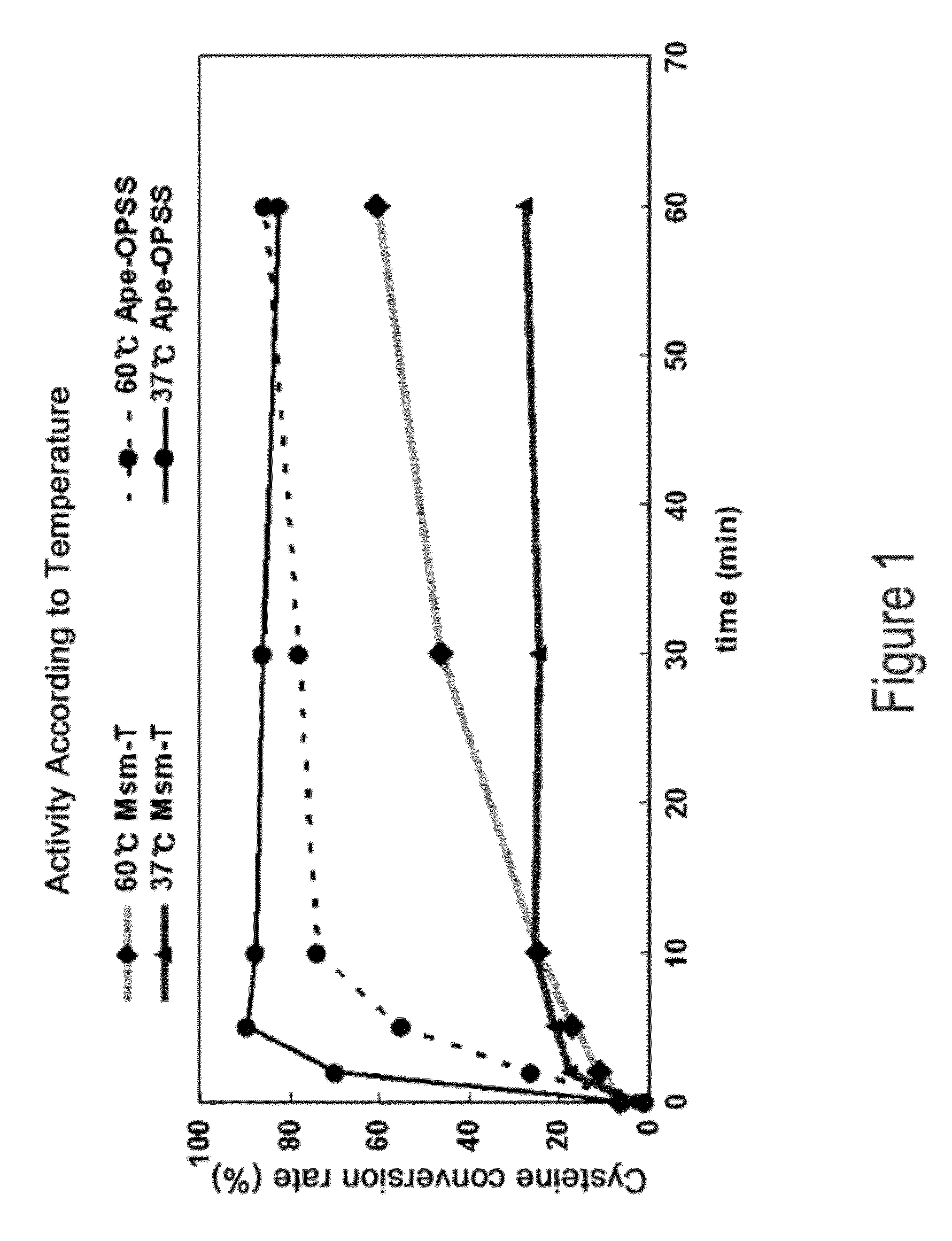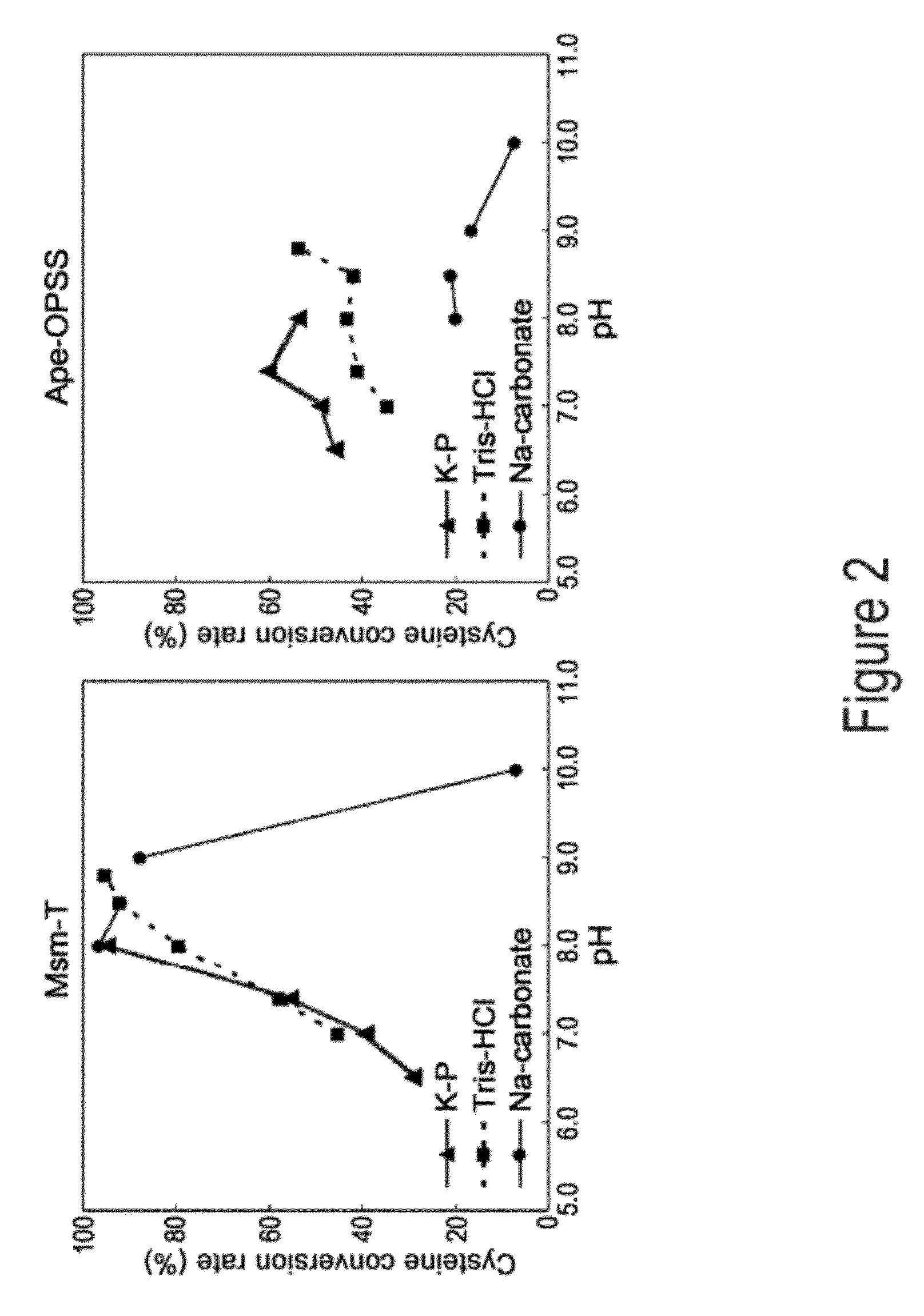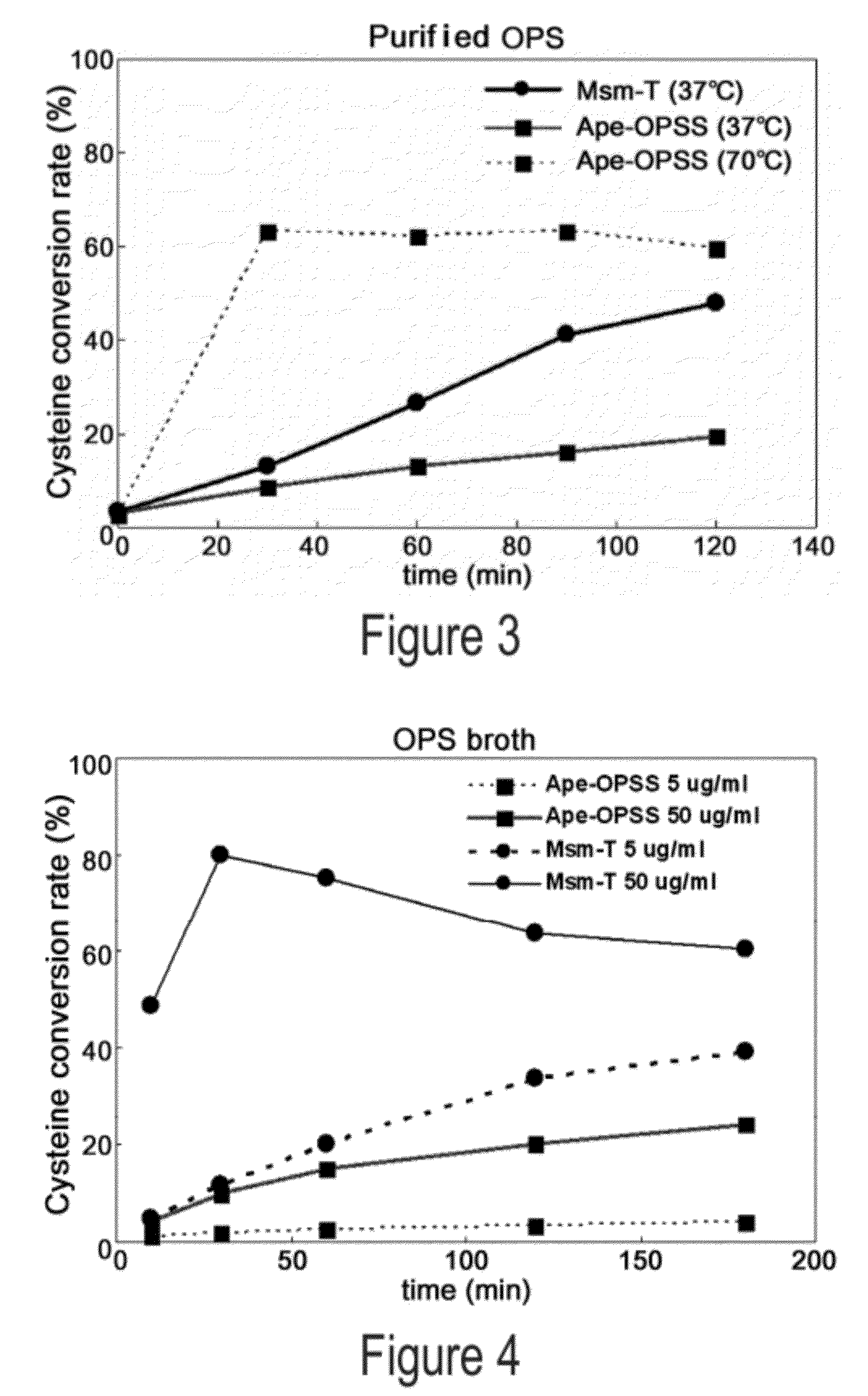O-phosphoserine sulfhydrylase mutants and method for production of cysteine using the same
a technology of phosphoserine sulfhydrylase and mutants, which is applied in the direction of enzymology, organic chemistry, transferases, etc., can solve the problems of difficult industrial application of the conversion process, large amount of environmental pollution, and large amount of sulfuric acid waste, etc., to achieve improved enzymatic activity, simple method, and high yield
- Summary
- Abstract
- Description
- Claims
- Application Information
AI Technical Summary
Benefits of technology
Problems solved by technology
Method used
Image
Examples
example 1
Development of OPSS
[0061]Aeropyrum pernix, Mycobacterium tuberculosis, and Trichomonas vaginalis are reported to have OPSS, an enzyme that use OPS, instead of OAS in E. coli, as a substrate for the synthesis of cysteine (Mino K and Ishikawa K, FEBS letters, 551: 133-138, 2003; Burns K E, Baumgart S, Dorrestein P C, Zhai H, McLafferty F W, and Begley T P, J. Am. Chem. Soc., 127: 11602-11603, 2005; Westrop G D, Goodall G, Mottram J C, and Coombs G H, J. Biol. Chem., 281: 25062-25075, 2006). Based on the report, the present inventors found two types of OPSS that convert OPS into cysteine, from Aeropyrum pernix and Mycobacterium tuberculosis H37Rv. Among them, the Mycobacterium tuberculosis H37Rv-derived OPSS enzyme was used for screening amino acid homology. As a result, three OPSS mutants Msm-OPSS, Rjo-OPSS, and Nfa-OPSS were secured from Mycobacterium smegmatis str. MC2 155, Rhodococcus jostii RHA1, and Nocardia farcinica IFM 10152, respectively.
[0062]To obtain OPSS from each strain,...
example 2
Assay of OPSS for Cysteine Synthesis Activity
[0065]The four OPSS enzymes obtained from various microorganism strains were assayed for the ability to catalyze the conversion of OPS to cysteine. With regard to assay conditions and methods (cysM enzyme assay), reference was made to previous reports (Mino K and Ishikawa K, FEBS letters, 551: 133-138, 2003; Burns K E, Baumgart S, Dorrestein P C, Zhai H, McLafferty F W, and Begley T P, J. Am. Chem. Soc., 127: 11602-11603, 2005; Westrop G D, Goodall G, Mottram J C and Coombs G H, J. Biol. Chem., 281: 25062-25075, 2006). The amount of the substrate used is represented by a unit of mL. Assay conditions for enzyme activity are summarized in Table 2, below.
[0066]
TABLE 2OPSStock sol'nFinal Conc.Blanksulfhydrase6xhis-enzyme—40 (50 mg)1M HEPES100 mM HEPES100100(pH 7.4)0.5M Na2S 10 mM Na2S202010 mM PLP 0.2 mM PLP2020100 mM OPS 5 mM OPS050DW790750Total10001000
[0067]Reaction solutions excepting the enzymes were incubated at 37° C. for 5 min, after w...
example 3
Preparation of Mtb-T and Msm-T, Mutants Deleted 5 C-Terminal Amino Acid Residues of Mtb-OPSS and Msm-OPSS
[0072]Mycobacterium tuberculosis H37Rv-derived OPSS (Mtb-OPSS), which catalyzes the conversion of OPS to cysteine with the aid of the additional enzymes mec+ and cysO, is able to use an S2− containing sulfur source in converting OPS to cysteine even in the absence of the additional enzymes when five C-terminal amino acid residues are removed therefrom. On the basis of this fact, Mtb-T (SEQ ID NO: 24), which can rapidly convert OPS in the presence of S2− as a sulfur source, was obtained. From Msm-OPSS that shares a high amino acid homology with Mtb-OPSS, Msm-T was also obtained by deleting 5 C-terminal amino acid residues. Expression vectors carrying the two enzyme mutants were constructed. In this regard, pfu PCR was performed on the genomic DNA of Mycobacterium tuberculosis H37Rv and Mycobacterium smegmatis str. MC2 155 in the presence of each pairs of primers of SEQ ID NOS: 17 ...
PUM
 Login to View More
Login to View More Abstract
Description
Claims
Application Information
 Login to View More
Login to View More - R&D
- Intellectual Property
- Life Sciences
- Materials
- Tech Scout
- Unparalleled Data Quality
- Higher Quality Content
- 60% Fewer Hallucinations
Browse by: Latest US Patents, China's latest patents, Technical Efficacy Thesaurus, Application Domain, Technology Topic, Popular Technical Reports.
© 2025 PatSnap. All rights reserved.Legal|Privacy policy|Modern Slavery Act Transparency Statement|Sitemap|About US| Contact US: help@patsnap.com



